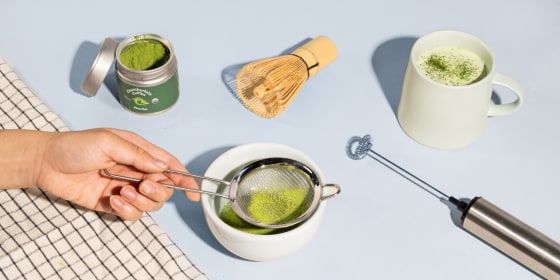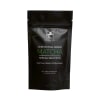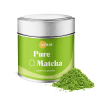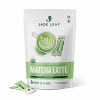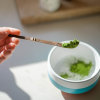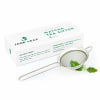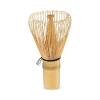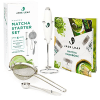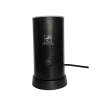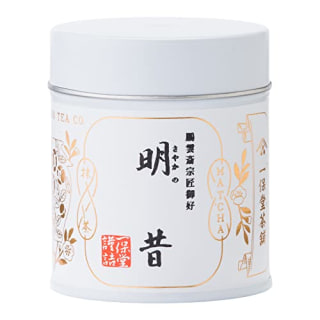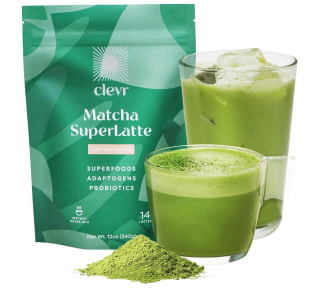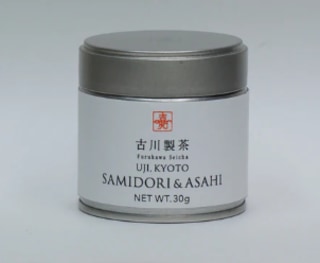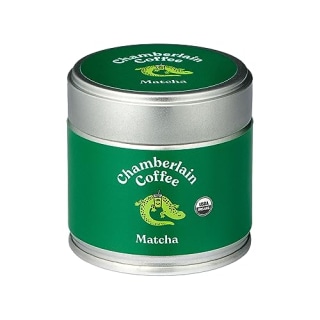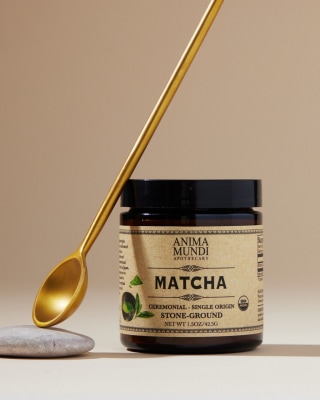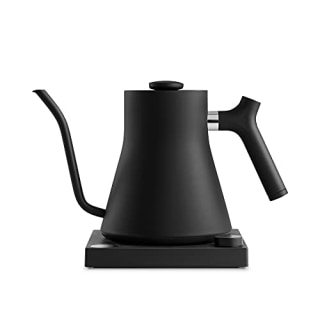As tempting as your local coffee shop may be, with the right tools, you can save money and time by making matcha at home. Experts I spoke to agree that drinking it comes with plenty of health benefits too, including deeper focus, increased memory, and lower chances of illness.
Our comprehensive guide to making matcha at home includes expert guidance and product recommendations, including some that we tried ourselves. Other popular matcha drinks, like matcha lattes, may require additional products outside of this guide, but you can still find helpful tips on how to make them below.
SKIP AHEAD How to shop for matcha powder | The best matcha powders | How to make matcha at home | The best matcha toolkit and machine | Why trust NBC Select?
How to shop for matcha powder
You’ll need to choose a matcha powder before making your drink. Our experts recommended keeping the following criteria in mind as you shop:
- Grade: The grade of matcha is the term used to describe its quality — the higher it is, the more authentic it will be, according to Steward. There are typically two distinctions that people outside of Japan use to distinguish between higher and lower grade matcha — ceremonial and culinary.
- Ingredients: Salazar adds that if matcha is the first listed ingredient on the product label, you’re likely getting all of the nutrients expected from high quality matcha. “Matcha weighs a lot less than sugar, so if the first ingredient is cane sugar, it’s not going to be a high quality matcha blend,” she says.
- Color: High grade (ceremonial) matcha should be vibrant and deep green because it’s made from the newest tea leaves and has been shaded for up to two weeks before plucking them, which creates a higher concentration of chlorophyll, according to Goggi. On the other hand, Goggi and Nicole Wilson, a tea writer and educator, say that lighter, more dull shades of green or yellow may be coming from older tea leaves and lower quality (culinary) matcha.
- Taste: Umami is known as the fifth taste in Japan and is often described as a savory sweetness, according to Wilson. “Matcha should taste earthy and grassy with umami, [and while] some bitterness is normal, it should not be unpleasant,” she says. Additionally, Salazar says there should be an aftertaste with a thick mouthfeel that is smooth and rich in flavor for higher grade matcha.
- Smell: According to Salazar, the aroma of matcha should be bold. Wilson says it should also have a noticeably fresh vegetal smell as soon as you open the packaging. “Lower grade matcha will still smell grassy, but there may be overtones of a fishy smell, like seaweed,” adds Goggi, and are to be avoided.
The best matcha powders
Using this guidance, I rounded up a list of both expert-recommended and NBC Select staff-favorite matcha powders.
Ippodo Tea Sayaka Rich Matcha
Wilson recommends this family-owned brand to emphasize the importance of sourcing matcha from Japan. “It’s become so trendy that a lot of other places around the world are making their version of it, but tea has terroir. The soil and climate of the place where it is grown have an effect on how it will taste,” she says.
Ippodo Tea recommends the 40-gram Sayaka matcha for those who are new to drinking it and want a milder flavor blend.
Golde Pure Matcha
This ceremonial grade matcha is freshly shade-grown and cold-processed in Uji, Japan, according to the brand. Golde notes that approximately one serving is equivalent to a shot of espresso or 72 grams of caffeine. The brand also sells its own Yuzu Matcha, which is a blend of its ceremonial grade powder and Japanese yuzu for a strong citrus twist. Our staff found this version to be very citrusy and strong, with a genuine yuzu taste.
Clevr Matcha SuperLatte
NBC Select reporter Zoe Malin says this Clevr powder is just like a “matcha latte in a bag.” According to the brand, this ceremonial grade matcha has adaptogens, mushrooms and probiotics and is also vegan and gluten free. It’s also blended with monk fruit for added sweetness without the refined sugars.
Bonsai Cha Special Selection Ceremonial Grade Matcha
Salazar recommends Bonsai Cha — one of the highest grade matchas she’s seen on the market — if you want to drink it straight. The premium first harvest leaves are sourced directly from family farmers in Kyoto, Japan, according to the brand.
Furukawa Seicha Samidori & Asahi Matcha
Furukawa Seicha is Steward’s go-to matcha brand and produces the highest standard matcha for drinking it the traditional way: straight and hot. Their matcha has lots of natural sweetness and umami as well, she adds.
The Samidori & Asahi matcha powder blend, which comes in 30 grams, is ideal for first-time matcha drinkers who prefer a gentler taste and soft mouthfeel, according to the brand. For those who want a stronger matcha, they recommend the Honzu Asahi powder for its sharp umami flavor and pleasant aftertaste.
Note: This site only ships internationally from Japan (price is converted from Japanese Yen) but offers DHL shipping to the United States as stated here. Steward has also received matcha powders from the Tea Academy of Japan and includes their link on the UK Tea Academy’s website.
Mizuba Tea Co. Daily Matcha Green Tea
Suzuki recommends the Mizuba Tea Co. because of the direct relationship with their farmers in Uji, Japan. This tin holds 40 grams of matcha, and leaves a creamy mouthfeel with milky and buttery tones, and a slight vanilla smell, according to Mizuba Tea Co. The brand also offers a culinary grade option and a ceremonial grade option.
Jade Leaf Matcha Organic Cafe Style Sweetened Matcha Latte Mix
NBC Select updates editor Mili Godio loves this matcha latte option because “it has the perfect amount of sweetness to cancel out any bitterness from the matcha.” She also pairs it with frothed almond milk and finds the blend very easy to whisk. Jade Leaf Matcha has a culinary grade option and a ceremonial grade option.
Chamberlain Coffee Matcha
Malin tried the mango matcha and likes that she doesn’t feel the need to add sweetener. “It’s fruity and earthy and I would drink it without honey. It has a brighter flavor and it’s a good balance compared to other matchas with a stronger earthy matcha flavor,” she says. Chamberlain Coffee offers all ceremonial grade matcha in flavors including vanilla, mango and chocolate, and one tin can make up to 30 cups, according to the brand.
Anima Mundi Organic + Ceremonial Grade Matcha
This ceremonial grade matcha is crafted on a 4th generation solar-powered family farm and sourced from Japan, according to the brand. We tried this powder and its vibrant green color and grassy smell were standout features. It was also very smooth and easy to sift through and whisk, maintaining its vibrancy throughout the process and tasting rich in umami to me.
How to make matcha at home
Matcha making accessories
Once you have your matcha powder, you can use each of the following tools to create your drink.
Step 1: Choose your bowl (chawan)
Wilson says, “matcha bowls should be wide and deep enough for you to be able to whisk with a smooth surface.” Bowls with a spout make it much easier to pour matcha into other things like milk for a latte. If you are on a budget, a simple rice bowl will do, she adds.
Teanagoo Japanese Natural Rock Texture Matcha Bowl and Whisk Holder
NBC Select editorial projects manager Rebecca Rodriguez uses this microwave- and dishwasher- safe bowl with a spout to make her matcha at home. The interior has a smooth transparent glaze, which allows for easy cleaning and holds up to 18 ounces, according to the brand.
The whisk holder provides proper storage for a bamboo whisk, should you purchase one. According to the brand, the best way to dry your whisk is to rest it on the holder to avoid mold or splinters. This will help maintain the shape of the bamboo strings and prevent them from shrinking.
Step 2: Scoop your matcha (chashaku)
Wilson’s general rule of thumb for measurements is one teaspoon of matcha for every eight ounces of water. Use the same proportions when substituting milk for a latte, and double this amount for iced drinks, she adds.
Depending on the grade of the matcha, the higher it is the less matcha powder you need, says Salazar. “What most people do is they put in too much water and then they end up not getting that beautiful froth. They end up using too much matcha or too much water,” she says.
Sesame Chashaku Matcha Scoop
Wilson recommends this matcha scoop to complete the traditional matcha making experience. It’s made to hold the perfect amount of matcha — 1.5 scoops being roughly a half teaspoon — and can be cleaned with a dry cloth or paper towel, according to the brand.
Step 3: Sift your matcha (chakoshi)
Our experts all agree that it’s important to sift your matcha before whisking it because this helps to break up clumps, and creates the smoothest texture possible.
Jade Leaf Matcha Stainless Steel Sifter
This stainless steel sifter is sold separately and also in a set (see below). It has a 4.5-star average rating from over 8,593 reviews on Amazon, and it can fit the amount of matcha you use in one scoop, ensuring that any clumps are broken down over your bowl.
Step 4: Temperature control your water
Our experts agree that it’s important to make sure your water isn’t boiling, as this will bring out more bitterness from the tea leaves. Wilson aims for her water to be around 165℉ and when prepared traditionally, she uses 1.5 to 2 grams of matcha powder poured into half a cup of hot water.
Salazar keeps her water between 140 and 160 degrees Fahrenheit, and recommends using a temperature-controlled kettle, but says you can also control temperature by transferring water from one pitcher to another. Each transfer of water will lower the temperature by 10 degrees Fahrenheit.
Fellow Stagg EKG Electric Gooseneck Kettle
This kettle has a temperature range of 135-212 degrees Fahrenheit. It holds up to 0.9 liters and has a toggle that lets you maintain the desired temperature of the water for up to 60 minutes, according to the brand.
Step 5: Whisk your matcha (chasen)
Our experts agree that you should whisk your matcha in a W- or M-shaped zigzag motion until the powder is mixed into the water well and forms a froth. “You’re primarily using your wrist to get that whisk going — you’re not using your whole arm when you’re doing the whip in a traditional style,” says Salazar. “Once the bubbles start to form, you can raise the whisk to the surface of the foam and lightly zigzag across, to make it more uniform and creamy,” adds Suzuki. Steward also recommends keeping your bamboo whisk from touching the bottom of the bowl so it doesn’t get damaged.
DoMatcha Chasen
A bamboo whisk can help make the matcha even more rich and creamy as it froths the powder. Wilson recommends this affordable bamboo whisk from DoMatcha while preparing matcha the traditional way.
Optional: Toolkits and machines
Jade Leaf Modern Matcha Starter Set
If you prefer modern matcha making tools, Jade Leaf offers a starter set with the following: an electric whisk frother, stainless steel scoop, stainless steel sifter, and full color matcha handbook, according to the brand. The electric whisk frother (also sold separately) is a useful tool to froth your milk if you would like a hot or iced latte. They also offer a traditional starter set, which includes a bamboo whisk.
Bonsai Cha Chasen Matcha Maker
Salazar recommends this matcha maker for those who want to save time by investing in a machine. She says you only have to add water and a scoop of matcha before choosing a hot or cold setting. According to the brand, the matcha is ready in just 90 seconds at an optimal temperature (149 degrees Fahrenheit).
Meet our experts
At NBC Select, we work with experts who have specialized knowledge and authority based on relevant training and/or experience. We also take steps to ensure all expert advice and recommendations are made independently and without undisclosed financial conflicts of interest.
- Asako Steward is a tutor at the UK Tea Academy, director for Tea Academy Japan and Japan Tea Ambassador for the U.K.
- Melissa Salazar is a Certified Tea Master and Tea Blender at the International Tea Masters Association and CEO of Red Zen Tea.
- Nicole Wilson is a tea writer, educator and founder of her blog Tea For Me Please.
- Simona Suzuki is president of the Global Japanese Tea Association.
- Peter Goggi is president of the Tea Association of the U.S.A.
Why trust NBC Select?
To create this guide, Carolyn Chun interviewed five tea experts with various backgrounds and researched many matcha powders on the market. Her product recommendations include options used by the experts and NBC Select staff.
Catch up on NBC Select’s in-depth coverage of tech and tools, wellness and more, and follow us on Facebook, Instagram, Twitter and TikTok to stay up to date.
